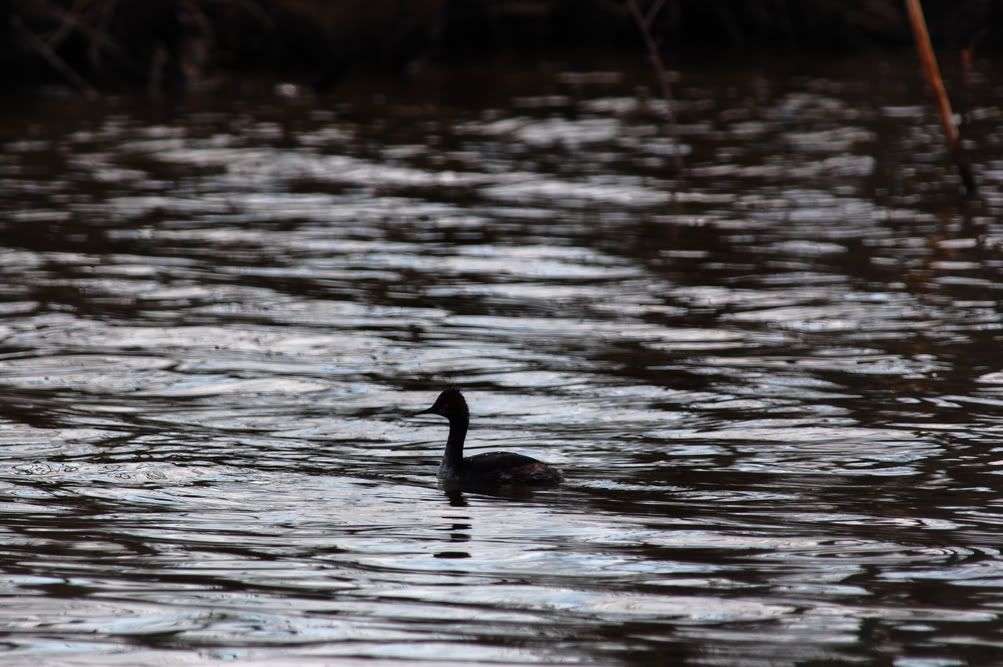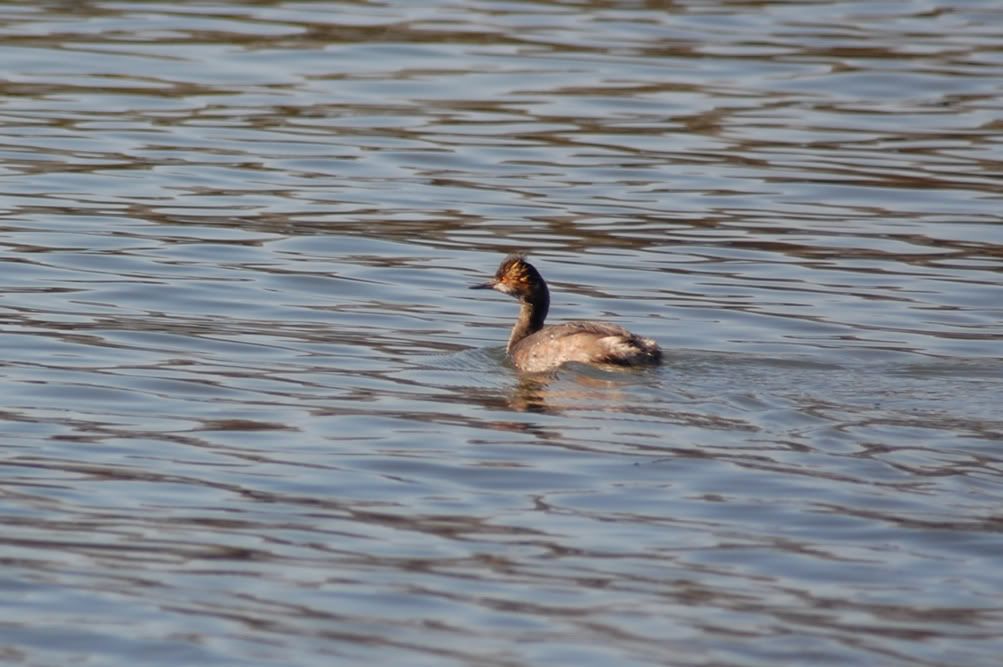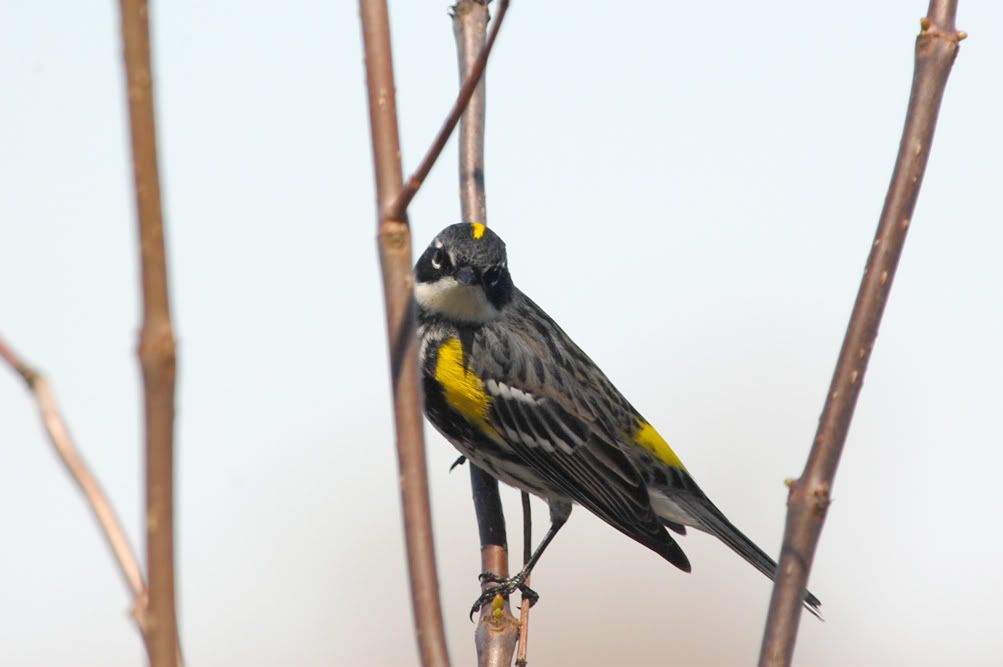What some might start referring to as my home away from home, I spent the last couple of mornings at CCSP taking photographs of birds. It’s what I do. It’s what I love. This past week, I even visited a couple of parts of the park that I hadn’t visited before. What’s funny is that it provided me with good looks of two birds I didn’t really have good photographs to go with…unfortunately, because of a little experimentation, I still don’t, however…I used the 2x teleconverter. Oops. Everything’s a LITTLE soft. Anyway, here are the fruits of this past week’s labors.
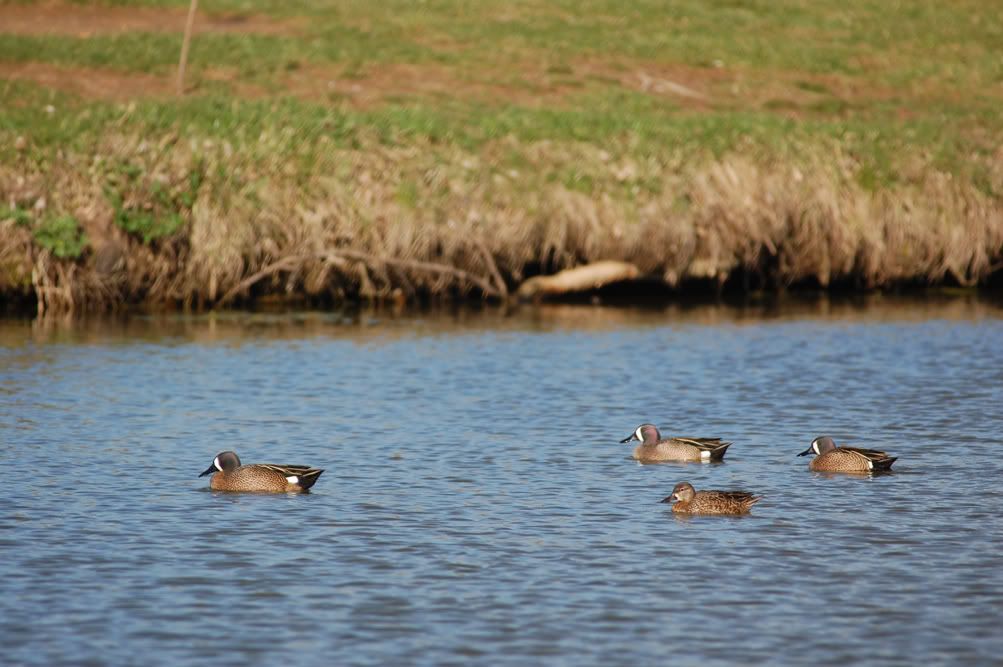 The first really good looks of birds I of which I didn’t have good photographs was the Blue-winged Teal. These reclusive, squeaky little duck-like birds tend to swim away as fast as they can when anyone approaches, if not fly away altogether. In this case, I was able to get pretty close and the 500mm telephoto didn’t disappoint, along with the morning’s gorgeous almost-golden light, in providing a couple of very solid photographs of this group of 5 males and 2 females. While I wasn’t able to catch any of the action of the males chasing each other (they did this twice when I was on the other end
The first really good looks of birds I of which I didn’t have good photographs was the Blue-winged Teal. These reclusive, squeaky little duck-like birds tend to swim away as fast as they can when anyone approaches, if not fly away altogether. In this case, I was able to get pretty close and the 500mm telephoto didn’t disappoint, along with the morning’s gorgeous almost-golden light, in providing a couple of very solid photographs of this group of 5 males and 2 females. While I wasn’t able to catch any of the action of the males chasing each other (they did this twice when I was on the other end of the pond), I still got solid looks. I don’t think I had every gotten that close during breeding season – their heads are so amazing. Gorgeous iridescence and that shade of slate blue – they really came out in the morning sun and I was glad to have seen it!
of the pond), I still got solid looks. I don’t think I had every gotten that close during breeding season – their heads are so amazing. Gorgeous iridescence and that shade of slate blue – they really came out in the morning sun and I was glad to have seen it!
Looking out across the lake from here, I got a decent enough view to be able to ID a juvenile Common Loon swimming roughly 200 yards out. Basically, it was a head bobbing above the chop every so often. The photos I got were barely passable for ID purposes let alone for this blog… <foreshadowing>Thankfully, fate would smile upon me, in a Loony way.</foreshadowing>
I then moved around to the little boat launch area just past the Youth Pond because I had seen something black and duck-like 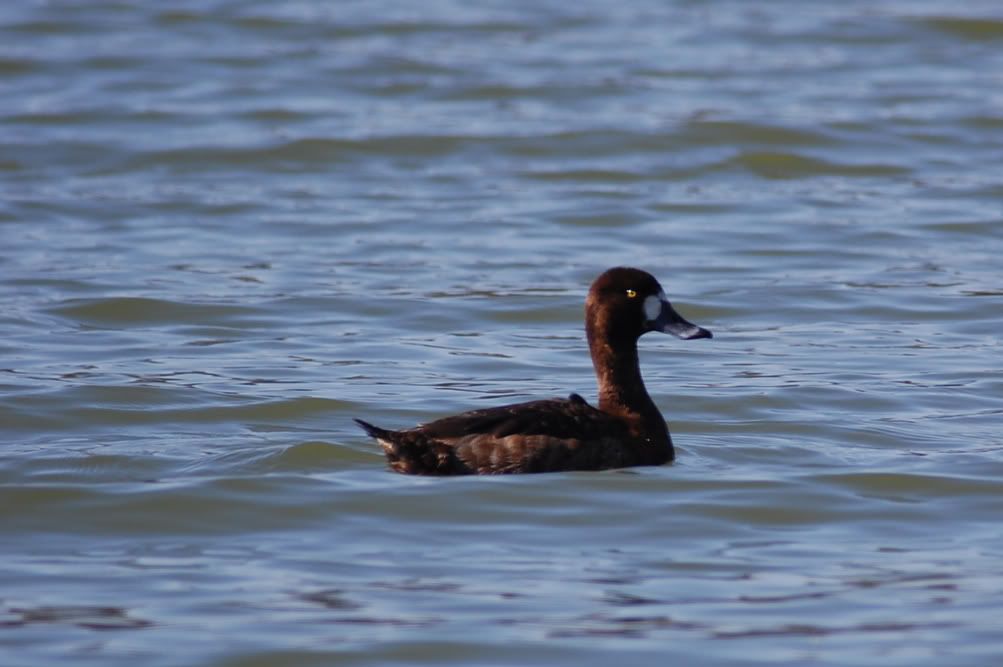 swimming near the “peninsula” – which used to be an island… When I got there, I spooked a Great Blue Heron – who was close to 50 yards away…sissy! – but didn’t manage to scare away the actual quarry: a lone, female Greater Scaup. She was pretty and she was swimming very slowly away. Unlike the Blue-winged Teal, it took her more then 10 minutes to get out of good photographic range. That said, the wind coming off the lake directly into my face made it hard to either focus or hold the camera completely still – even on the
swimming near the “peninsula” – which used to be an island… When I got there, I spooked a Great Blue Heron – who was close to 50 yards away…sissy! – but didn’t manage to scare away the actual quarry: a lone, female Greater Scaup. She was pretty and she was swimming very slowly away. Unlike the Blue-winged Teal, it took her more then 10 minutes to get out of good photographic range. That said, the wind coming off the lake directly into my face made it hard to either focus or hold the camera completely still – even on the  tripod. Still, I got some very good looks and a couple very good photos. I don’t think I had realized how reddish brown the feathers were on a bird that looks deceptively black-brown from a distance. Still, she hung around for a while, and I was grateful.
tripod. Still, I got some very good looks and a couple very good photos. I don’t think I had realized how reddish brown the feathers were on a bird that looks deceptively black-brown from a distance. Still, she hung around for a while, and I was grateful.
The beach was the next destination, as there had been mention of a Lesser Black-backed Gull hanging out amongst the Ring-billeds. This would be a life bird for me, so I thought I would check it out. When I got there, I saw only 4 gulls – all Ring-billed. Ah, well. I was a little disappointed, but as I was getting closer to the beach, Spring was confirmed for me, photographically. You see, I have this thing…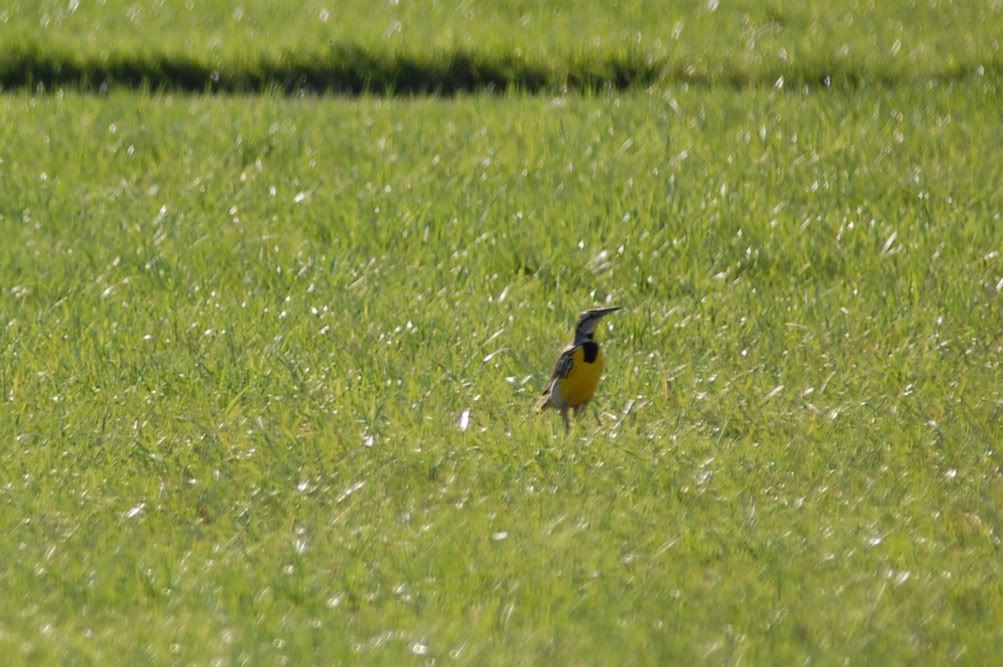 maybe it stems from a form of insanity, maybe not – you’ll have to decide. However, since about 1992 or so, I have maintained that it is not truly Spring until I see, and hear, an Eastern Meadowlark. They used to greet me on my trek back from Spring Break to Wabash, right around the Indiana border, and that would seal it for me. Recently, they’ve been eluding me until much later into Spring. This, year, however, I saw one on the 5th of April, so, it became Spring. However, I haven’t gotten good photographs of
maybe it stems from a form of insanity, maybe not – you’ll have to decide. However, since about 1992 or so, I have maintained that it is not truly Spring until I see, and hear, an Eastern Meadowlark. They used to greet me on my trek back from Spring Break to Wabash, right around the Indiana border, and that would seal it for me. Recently, they’ve been eluding me until much later into Spring. This, year, however, I saw one on the 5th of April, so, it became Spring. However, I haven’t gotten good photographs of 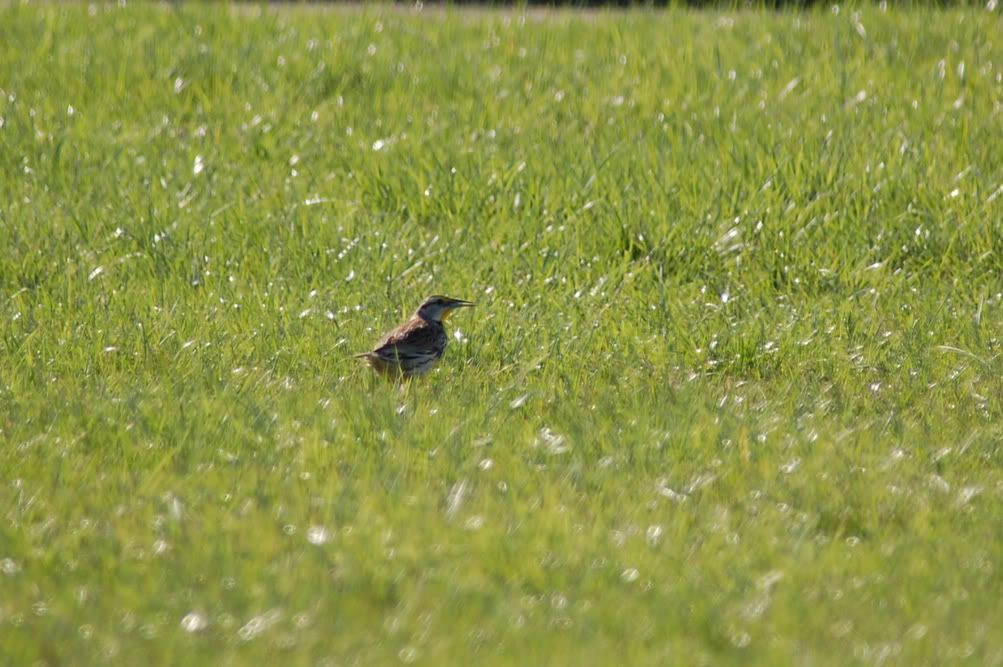 them, EVER, and that was the biggest change, this time around. This happy fella provided some excellent looks – even moving his head around quite a bit to allow for all you field-mark junkies out there to make all the requisite diagnoses. Once I got close enough for REALLY good shots, however, he flew to the other side of the lake – something that is impossible to track (even with the monster lens…) with a large bird, let alone one the size of the Eastern Meadowlark. So, I turned my attention back to the beach – fearing there would not be anything worthwhile since about 5 minutes prior, two motorboats went whizzing through the area where the Loon was and creating a bunch of wake. That’s when I saw it…
them, EVER, and that was the biggest change, this time around. This happy fella provided some excellent looks – even moving his head around quite a bit to allow for all you field-mark junkies out there to make all the requisite diagnoses. Once I got close enough for REALLY good shots, however, he flew to the other side of the lake – something that is impossible to track (even with the monster lens…) with a large bird, let alone one the size of the Eastern Meadowlark. So, I turned my attention back to the beach – fearing there would not be anything worthwhile since about 5 minutes prior, two motorboats went whizzing through the area where the Loon was and creating a bunch of wake. That’s when I saw it…
 I have never been closer than a couple hundred yards to a Common Loon. This is evidenced by my displeasingly rough photographs that are barely useful for IDing the birds. This changed dramatically, as I watched a full-breeding plumage Common Loon swimming
I have never been closer than a couple hundred yards to a Common Loon. This is evidenced by my displeasingly rough photographs that are barely useful for IDing the birds. This changed dramatically, as I watched a full-breeding plumage Common Loon swimming  *towards* the beach. At its closest, it was within, I would say, 35-40 yards. I got some amazing looks. It was at this point that I noticed it was going to be very silhouetted and I would have to be careful because it was swimming right to that patch of the water that served as the brilliant sun-reflector and photographer-blinder.
*towards* the beach. At its closest, it was within, I would say, 35-40 yards. I got some amazing looks. It was at this point that I noticed it was going to be very silhouetted and I would have to be careful because it was swimming right to that patch of the water that served as the brilliant sun-reflector and photographer-blinder. 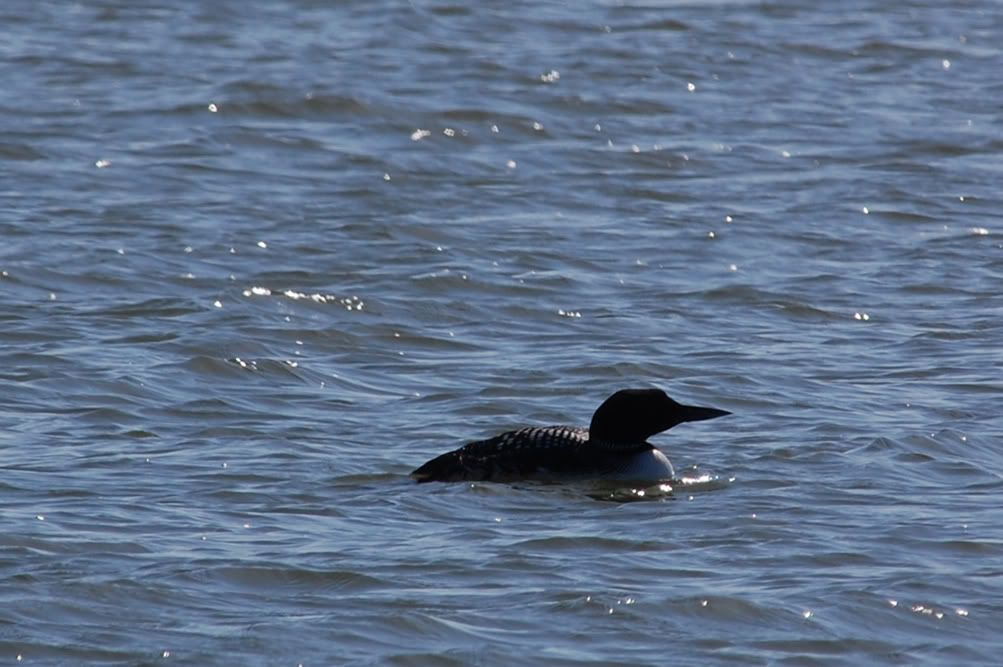 Thankfully, I got some excellent shots of this beautiful bird before it got to a point where it was physically painful to try to focus on any portion of the water where it was swimming. That said, I still managed close to 10 minutes of quality time with this swimming duck and apparently didn’t spook it, as it didn’t dive once. It just swam closer and closer, until I think it figured out I was watching,
Thankfully, I got some excellent shots of this beautiful bird before it got to a point where it was physically painful to try to focus on any portion of the water where it was swimming. That said, I still managed close to 10 minutes of quality time with this swimming duck and apparently didn’t spook it, as it didn’t dive once. It just swam closer and closer, until I think it figured out I was watching, 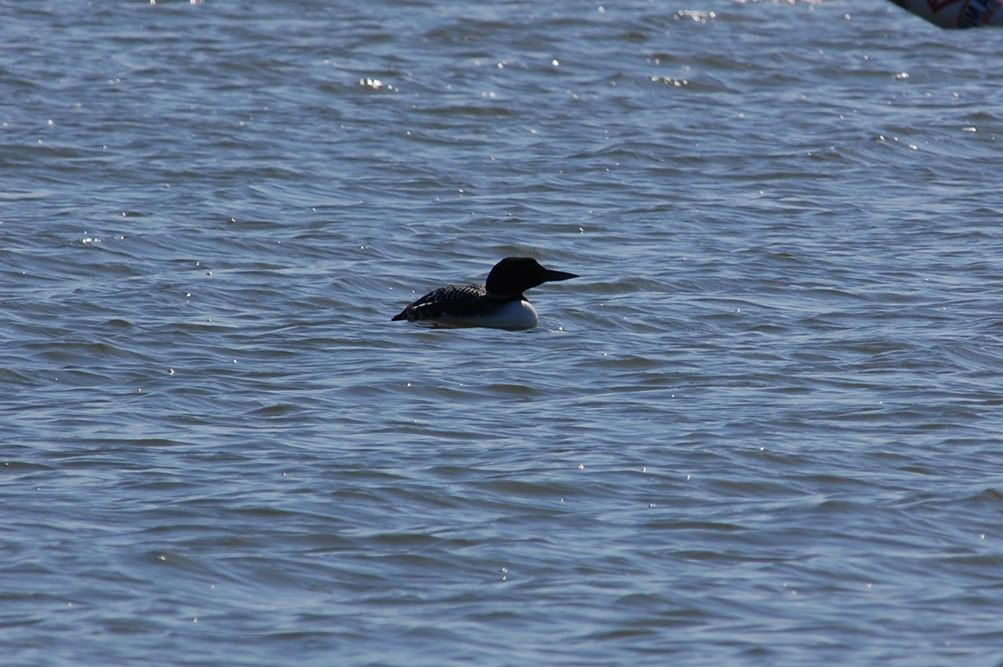 and then just swam further out, slowly, allowing some great looks at the wonderful almost-houndstooth pattern of feathers on its back. I love Loons – and not just my family. This was VERY cool for me.
and then just swam further out, slowly, allowing some great looks at the wonderful almost-houndstooth pattern of feathers on its back. I love Loons – and not just my family. This was VERY cool for me.
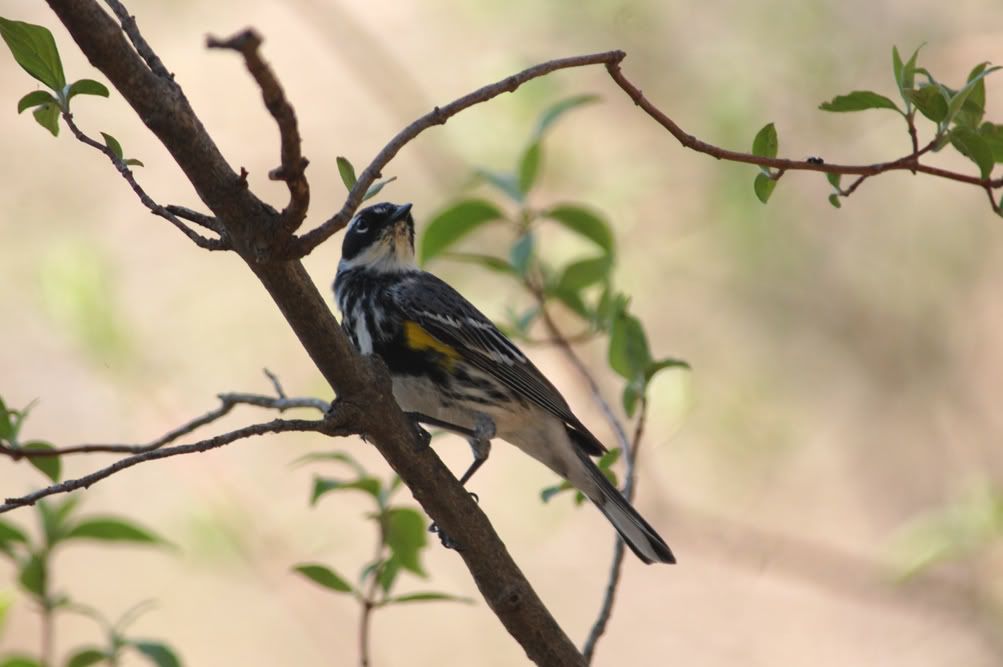 See something tasty?
See something tasty? 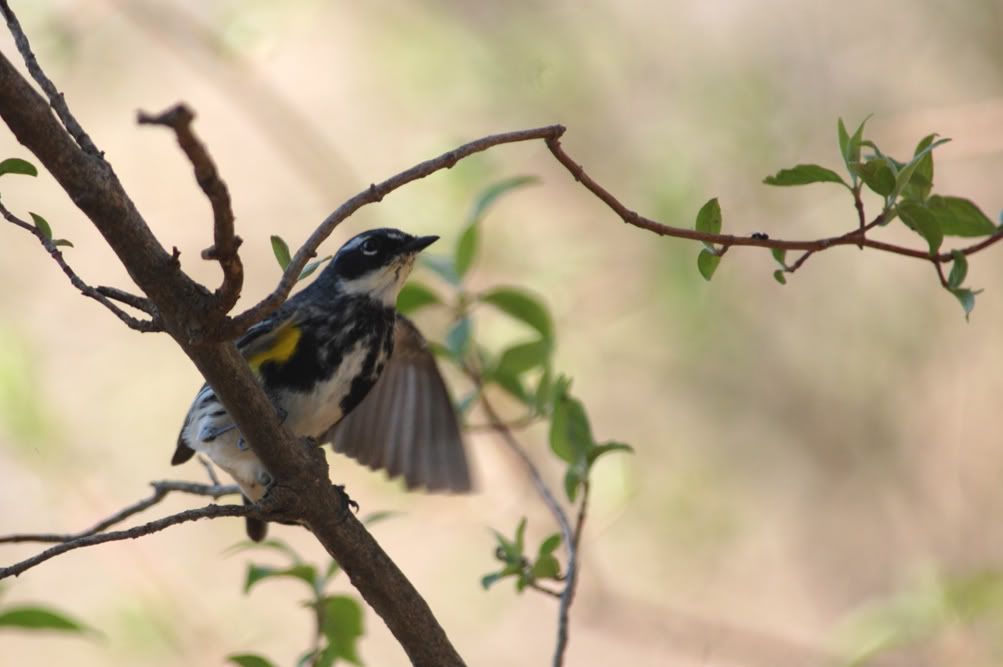 Let’s get a closer look…
Let’s get a closer look… *boing*
*boing*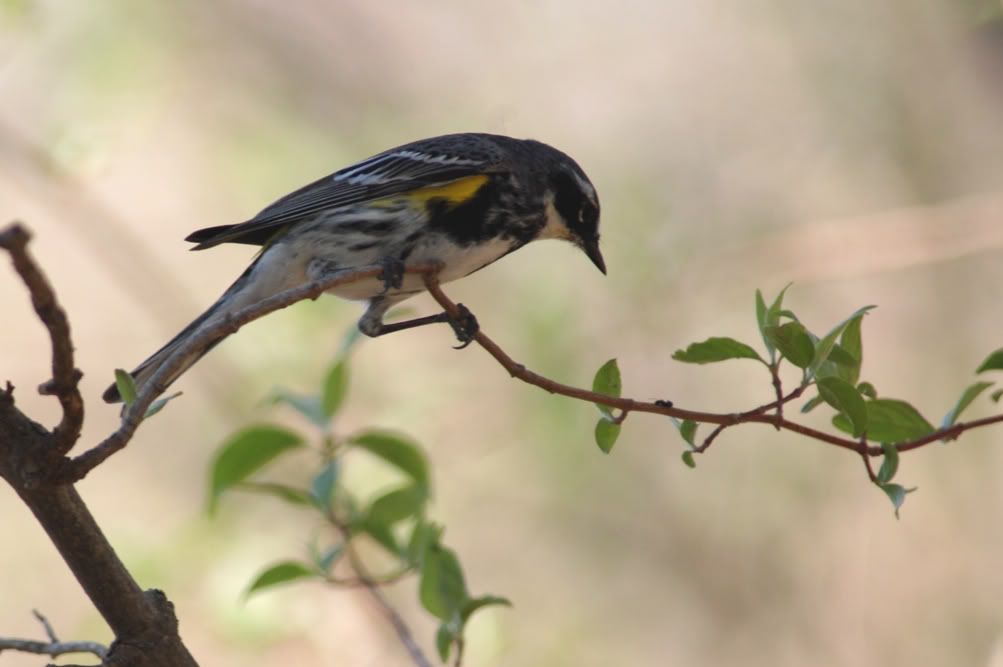 Hmmm…
Hmmm… 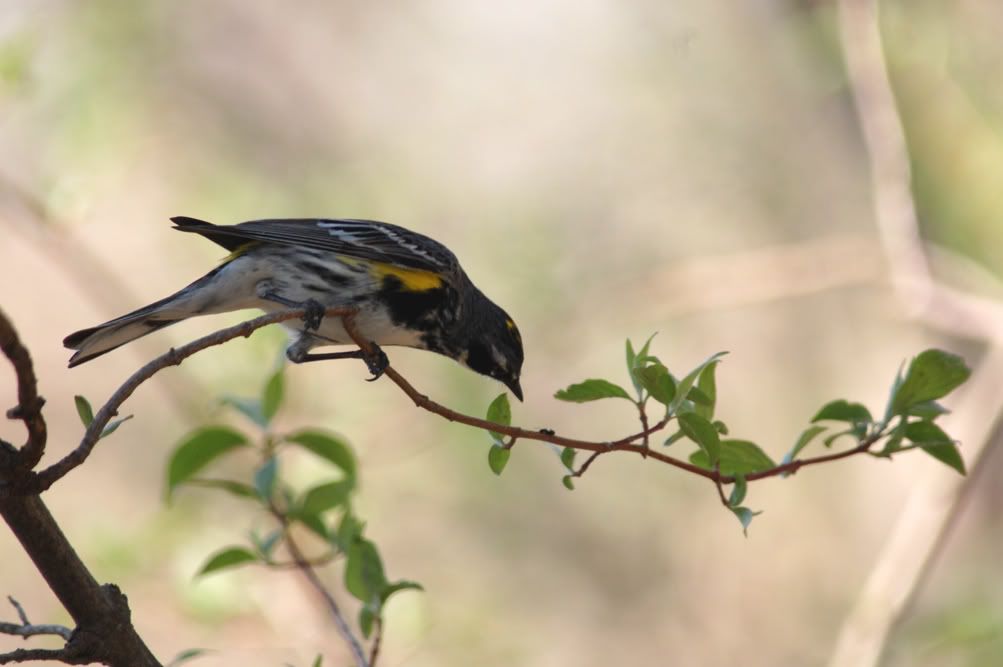 Yes…food!
Yes…food!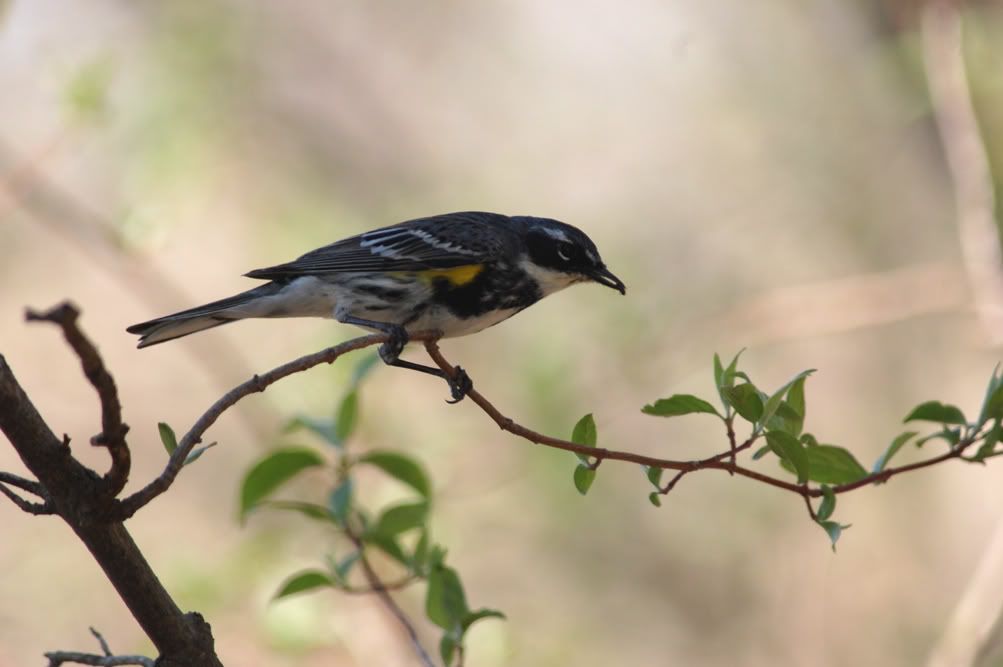 Mmmm…ant.
Mmmm…ant.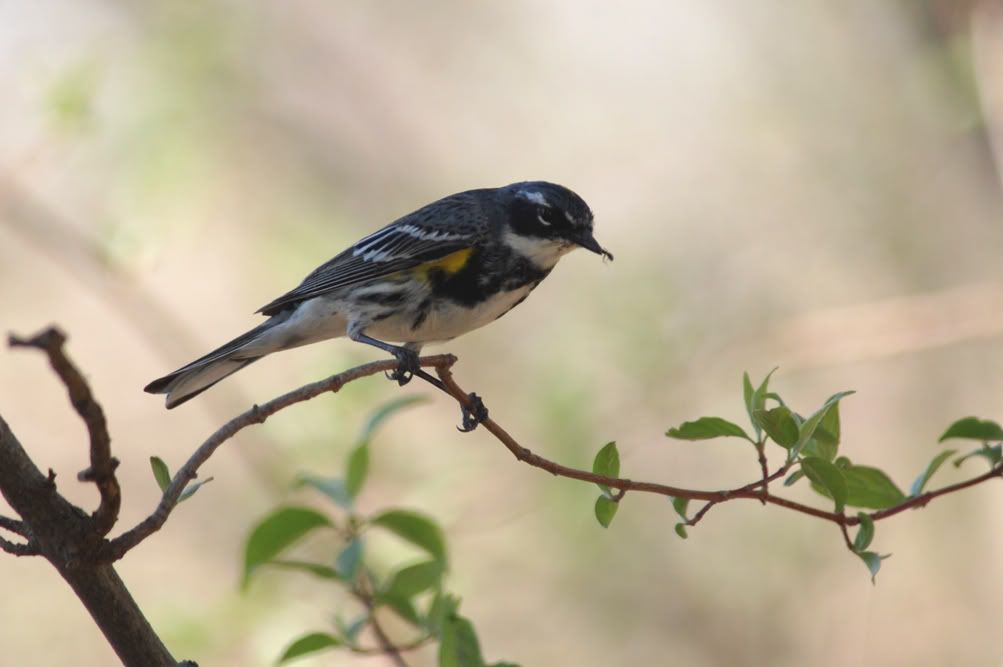 ANTi-climactic?
ANTi-climactic?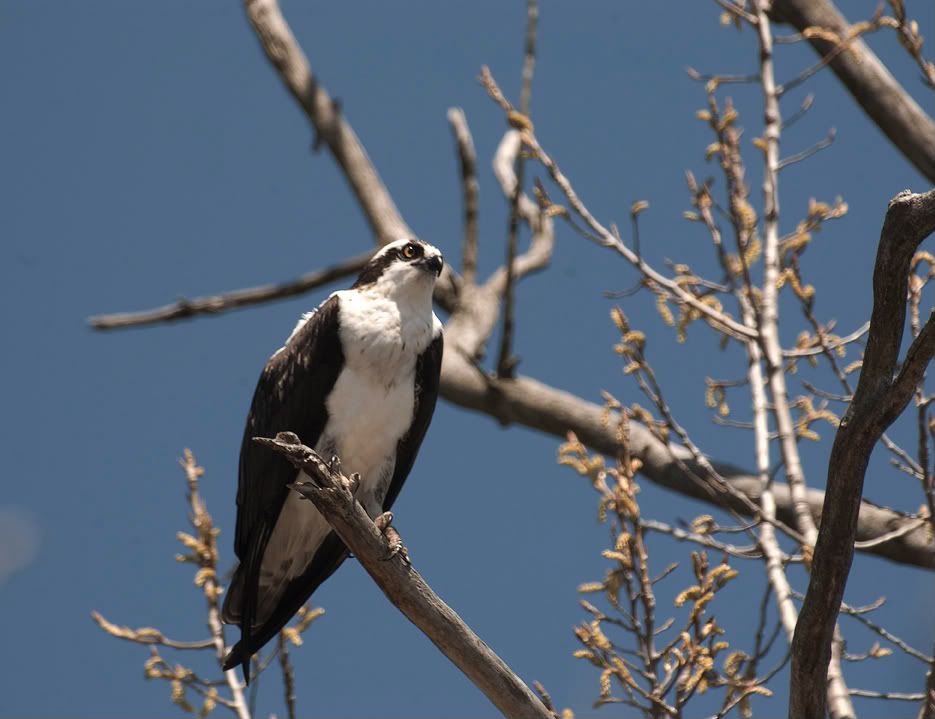 This was from LAST year’s tax day trip. He looks as happy as the rest of us. However, the lesson here is to not interrupt dinner, just document it.
This was from LAST year’s tax day trip. He looks as happy as the rest of us. However, the lesson here is to not interrupt dinner, just document it.